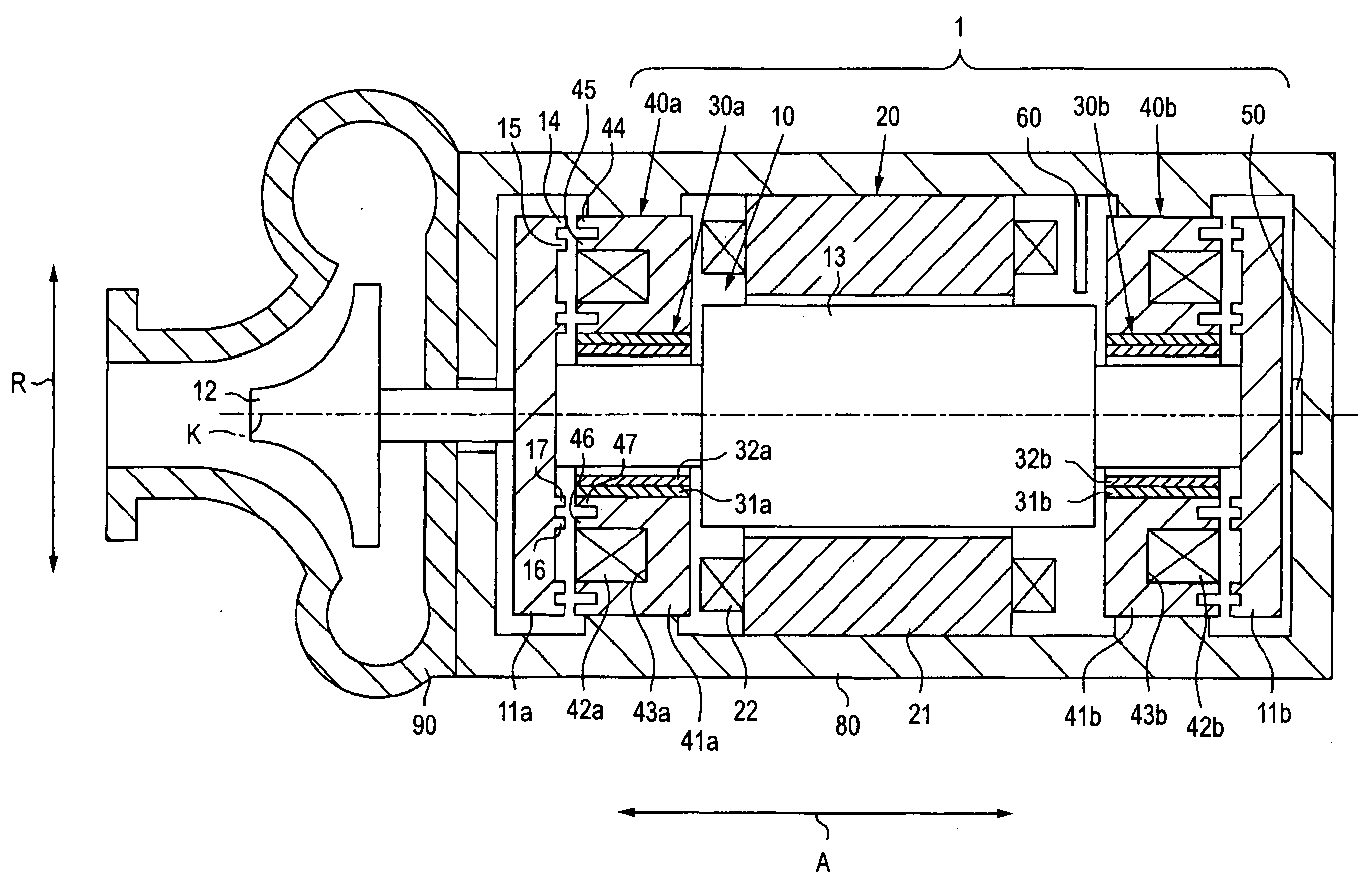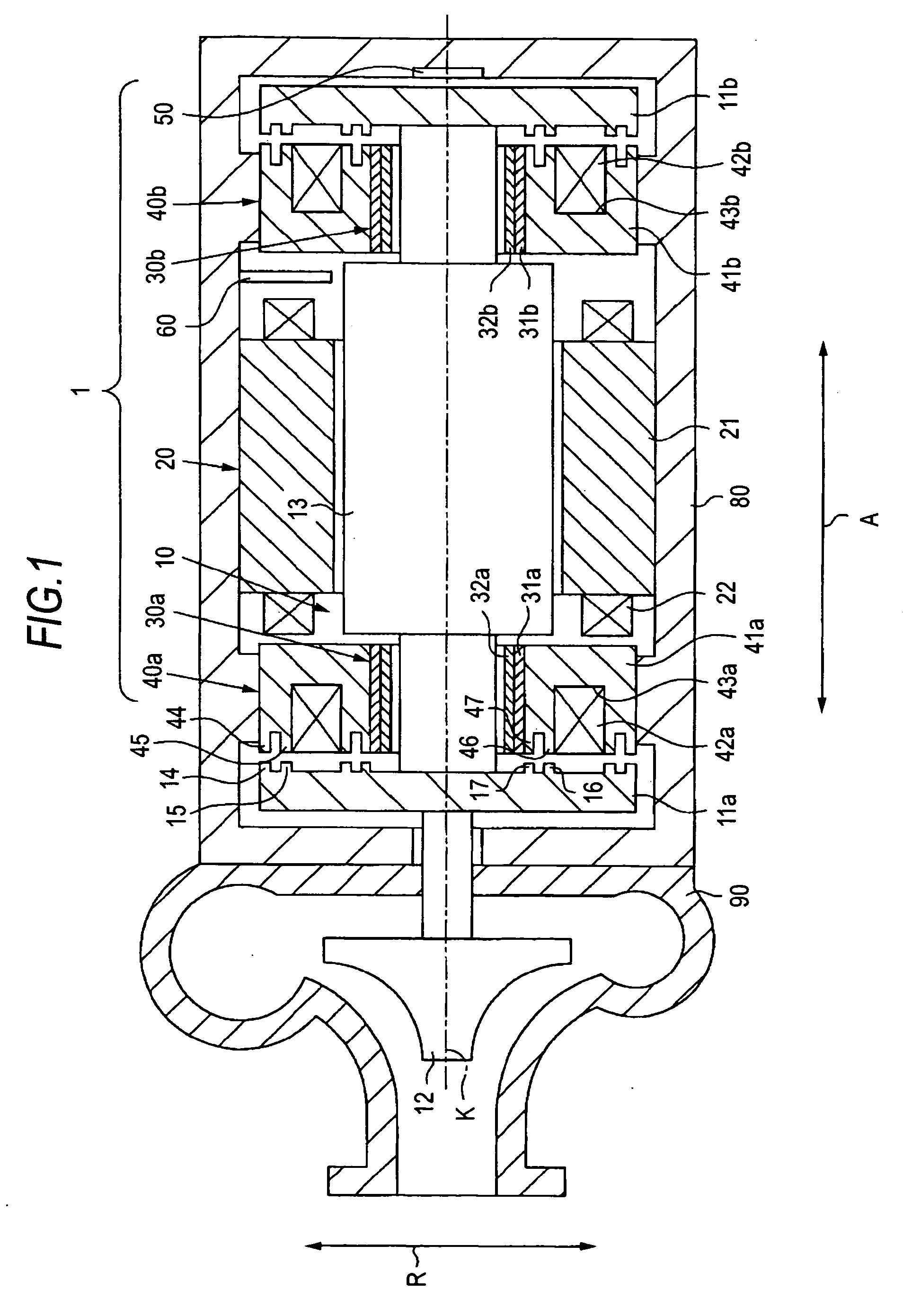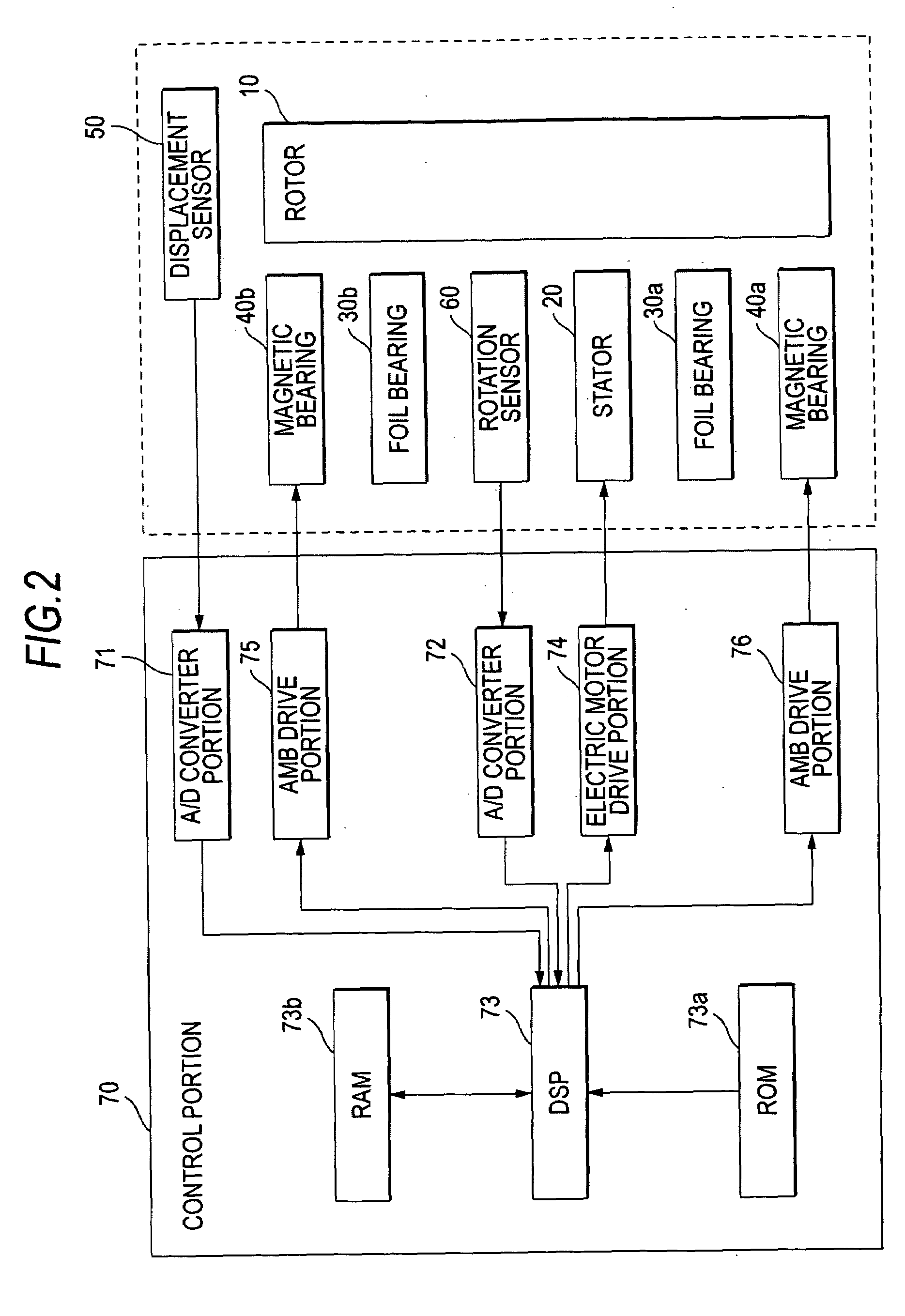Bearing apparatus and centrifugal compressor provided with same
a technology of bearing apparatus and centrifugal compressor, which is applied in the direction of magnetic bearings, machines/engines, liquid fuel engines, etc., can solve the problems of complex construction of suppressing wear of foil bearings and worn foil bearings, and achieve the effect of suppressing wear of foil bearings and simple construction
- Summary
- Abstract
- Description
- Claims
- Application Information
AI Technical Summary
Benefits of technology
Problems solved by technology
Method used
Image
Examples
Embodiment Construction
[0035]One preferred embodiment of a bearing apparatus of the present invention will now be described with reference to the drawings. FIG. 1 is a schematic view showing an overall construction of a centrifugal compressor provided with the bearing apparatus of the invention. As shown in FIG. 1, the bearing apparatus 1 comprises a rotor (rotating member) 10, a stator 20 for producing a rotating magnetic field for rotating the rotor 10, and foil bearings 30a and 30b and magnetic bearings 40a and 40b which rotatably support the rotor 10. An electric motor is formed by the rotor 10 and the stator 20. The bearing apparatus 1 further comprises a displacement sensor 50 for detecting the position of the rotor 10 in an axial direction (which is parallel to a rotation axis K of the rotor 10, and is indicated by arrow A in FIG. 1), and a rotation sensor (detector) 60 for detecting the number of revolutions of the rotor 10 per unit time (hereinafter referred to merely as “the number of revolution...
PUM
 Login to View More
Login to View More Abstract
Description
Claims
Application Information
 Login to View More
Login to View More - R&D
- Intellectual Property
- Life Sciences
- Materials
- Tech Scout
- Unparalleled Data Quality
- Higher Quality Content
- 60% Fewer Hallucinations
Browse by: Latest US Patents, China's latest patents, Technical Efficacy Thesaurus, Application Domain, Technology Topic, Popular Technical Reports.
© 2025 PatSnap. All rights reserved.Legal|Privacy policy|Modern Slavery Act Transparency Statement|Sitemap|About US| Contact US: help@patsnap.com



